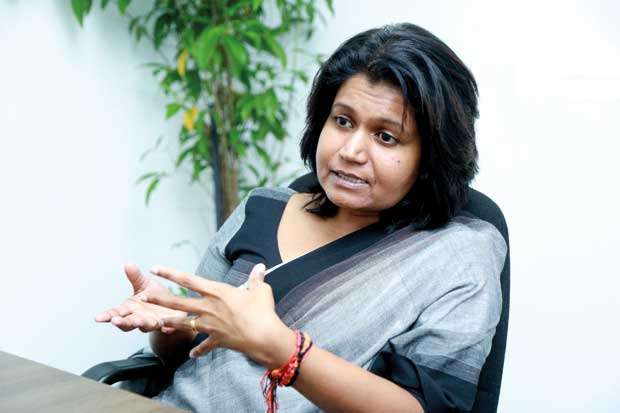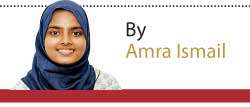13 Sep 2018 - {{hitsCtrl.values.hits}}

 Following the Ethnic conflict in the Rakhine state in Myanmar,Rohingya refugees have found Cox’s Bazaar in Bangaladesh a safe haven. According to the UN Office for the Coordination of Humanitarian Affairs, the refugee camps around Cox’s Bazaar homes the world’s largest refugee camp.The influx is said to be the world’s fastest growing refugee crisis with the UN describing the situation in Rakhine, as a “textbook example of ethnic cleansing.
Following the Ethnic conflict in the Rakhine state in Myanmar,Rohingya refugees have found Cox’s Bazaar in Bangaladesh a safe haven. According to the UN Office for the Coordination of Humanitarian Affairs, the refugee camps around Cox’s Bazaar homes the world’s largest refugee camp.The influx is said to be the world’s fastest growing refugee crisis with the UN describing the situation in Rakhine, as a “textbook example of ethnic cleansing.
” Various health issues have inevitably cropped up in Cox’s Bazaar owing to the conditions in the camps and the heavy monsoon. Against this backdrop Dr. Padmini Perera from the World Health Organization (WHO) Country Office in Sri Lanka assisted in providing the technical expertise required for providing health services.
She has worked in the area of emergency preparedness since 2010, initially at the Ministry of Health, Sri Lanka and now at the WHO Country Office. In an interview with the Daily Mirror, Dr.Perera shared her experience of working in Cox’s Bazaar during a recent three week visit there. She gave an insight into the health issues prevalent and how the WHO contributed in maximizing the health services provided. She said that the refugee influx in Cox’s Bazaar was a Grade 3 emergency that required a massive response.
Excerpts of the interview:
Q To start off- what were your initial observations of the situation in Cox’s Bazaar?
I had to lead the health operation team in the Cox’s Bazaar field office. We had around 11 people working in the health operations team and we worked along with the Epidemiology, Admin and logistics teams in the WHO field office. WHO has an Operations Plan for the response and my task was to streamline the work in line with the Operations Plan.
This was all a continuation of the services that have been provided by the WHO since the start of the influx in 2017. This time the conditions were far more settled than last time when I went there in December last year. Last time when I was there, there was an outbreak of diphtheria.
The WHO has a way of classifying the emergencies as ungraded, Grade 1, Grade 2 and Grade 3. This is a Grade 3 emergency where a massive response is required. It’s not easy to provide health services to 1 million refugees. There are many barriers including language barriers. They speak a different language which is neither Bengali nor the language spoken in Cox’s Bazaar.
I was anticipating most of the problems. It’s the same kind of things that crop up at any emergency. The context is different, but it’s the same issues that come out.
Sri Lanka has a very strong healthcare delivery network. The public health network is very much in place to make sure that any person in the country can be reached
Q What were the main health issues that arose?
One main issue was the spread of communicable diseases. Then there were issues related to water, sanitation and hygiene. There were quite a few camps and they were cramped up. There were a lot of partners working in the field trying to improve the situation.
Q There was limited funding and the circumstances were obviously dire. How challenging was it to treat refugees?
WHO is the cluster lead for health emergencies globally. We provide the technical lead. We support the development of plans, protocols, and provide guidance to partners. We are also involved in monitoring and the evaluation of health services in the field along with the other health partners. WHO doesn’t directly provide patient care in the field. There are almost 100 other health partners like MSF, UNICEF, UNFPA, Brac which is a local NGO, the Red Cross, the Red Crescent etc.
Q Did you interact with the refugees while working there?
My task was to provide technical guidance to the health operations team coordinating with the other technical teams and also other health partners. I was not directly involved in interactions with the refugees.
Q The press release issued by the WHO states that cholera was prevented this time and that measles and diphtheria were curtailed. How was the WHO instrumental in this?
It was through the immunization campaigns. We had around three rounds of vaccination for cholera. It was the same with diphtheria. We had several rounds of diphtheria vaccination. So we were able to curtail the diphtheria outbreak. There were no reported cases of cholera. But due to the camp conditions there, the cholera vaccine was given. The WHO planned the immunization programme together with the other health partners and the Ministry of Health of Bangaladesh.
Q In terms of emergency preparedness how do you think the Sri Lankan health sector can improve taking into account the experiences of working in Bangladesh?
Sri Lanka has a very strong healthcare delivery network. The public health network is very much in place to make sure that any person in the country can be reached. Even in disasters and emergencies we use the same network. Having such a resilient and strong system has been a plus point. We also have a well-trained health staff. In addition we have the national disaster management framework and all stakeholders support each other for any emergency.
Q How did your experiences of working in emergency situations in Sri Lanka assist you during your time in Cox’s Bazaar?
It was easier for me to understand the challenges in the field and also what the needs would be. That helped a lot.
Q Apart from dealing with disease outbreaks, how has the WHO been able to deal with the psychological state of the Rohingya refugees?
It was through the mental health and psycho-social support programme. In Bangladesh it is led by Action Against Hunger (ACF), which is an international NGO which is the lead for mental health and psycho-social support. WHO provides the technical leadership to the partners in Cox’s Bazaar.
Q Seventy percent of births are taking place outside health facilities. What measures has the WHO taken to encourage people to access sexual and reproductive health in Cox’s Bazaar?
UNFPA leads the sexual and reproductive health technical programme. All partners in that particular group as well as the health sector has been working towards improving people’s understanding of the services available. You have over 200 health posts. Not all have labour facilities, but still, there is a good network. What we want to promote is for people to access these places, and not just stay at home (camps). We encourage people mainly through awareness by urging them to come to maternity clinics etc.
I had to lead the health operation team in the Cox’s Bazaar field office. We had around 11 people working in the health operations team and we worked along with the Epidemiology, Admin and logistics teams
Q Are there adequate sanitary facilities?
You have adequate numbers. You have adequate sources of water. But the problem is the quality. WHO is working with the partners on water quality assessment in the field.
Q Do refugee children have access to education?
Now they have schools. There is an education cluster which is working in the field providing education to the children.
Q What’s the specialty of the early warning alert and response system that’s established there?
WHO has established the Early Warning and Response System (EWARS) in the camp settling. You get alerts from the health posts on communicable diseases.
If there is a communicable disease that is reported with a potential for an outbreak, the WHO along with other partners immediately sends a team to investigate and assure that measures are taken to prevent further spread.
For example, if it’s a watery diarrhea case, we don’t know whether it’s just watery diarrhea or cholera. So you go to the field immediately and investigate, and do some active case finding- to see if there are more cases. Then we take remedial measures and make sure it doesn’t spread beyond that particular point.
Q Do you have any memorable experiences from your time there which you would like to share?
The thing which struck me most was visiting the Cox’s Bazaar laboratory. The last time I was there we were working towards establishing a field laboratory.
The second time I went there it was functioning and it is so close to the camps. It contributes much to the health service delivery in the field, especially in the area of communicable diseases. It was really a pleasant experience visiting the functioning lab which we were working towards several months back.
Q Any constraints you faced?
Any emergency context has so many challenges and this is a situation involving refugees and not a situation with internally displaced individuals. There are many social and political issues involved.
This added that extra layer of complexity to providing health services in the field which was quite a challenge. The partners are doing a good job considering the difficult conditions and WHO is providing technical assistance to ensure that the best possible healthcare is given in the field.
Pix by - Damith Wickramasinghe
10 Jan 2025 29 minute ago
10 Jan 2025 2 hours ago
10 Jan 2025 2 hours ago
10 Jan 2025 4 hours ago
10 Jan 2025 4 hours ago